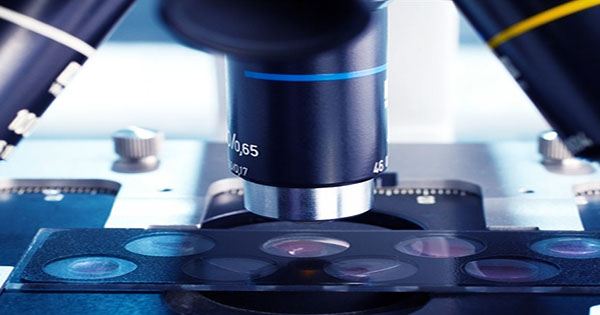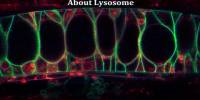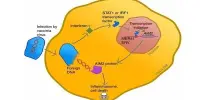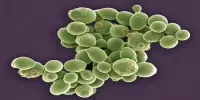Drug-resistant bacteria are strains of bacteria that have developed resistance to one or more antibiotics, making them more difficult to treat. These bacteria are sometimes referred to as “superbugs” because they are highly resistant to many different types of antibiotics.
According to the World Health Organization (WHO), antimicrobial resistance is one of the top 10 worldwide public health problems, and researchers have been frantically searching for new treatments for the most lethal drug-resistant illnesses.
Study conducted by a University of Maryland researcher in partnership with the National Institute of Allergy and Infectious Diseases reveals that treating drug-resistant illnesses by lowering virulence rather than by aiming to completely eradicate the bacteria may be an effective alternative.
Their study revealed how two proteins enable the methicillin-resistant Staphylococcus aureus (MRSA) bacterium to secrete the toxins that make people sick. According to the findings, treatments that target these two proteins may be able to deactivate MRSA, making it less lethal and maybe even harmless. Such an approach would also reduce the risk of promoting antibiotic resistance.
The paper, which was published on February 13, 2023, in the Proceedings of the National Academy of Science suggests that similar mechanisms may exist in other bacteria, pointing to the potential for a new approach to treating other bacterial infections.
“We were looking for an alternative way of approaching MRSA,” said Seth Dickey, an assistant professor in the UMD Department of Veterinary Medicine and lead author of the study. “We were interested in understanding how the bacterium causes disease to see if we could interfere directly with the virulence factors that the bug produces. If we can disarm it, then we may not have to worry about it evading antimicrobial agents.”
We were looking for an alternative way of approaching MRSA. We were interested in understanding how the bacterium causes disease to see if we could interfere directly with the virulence factors that the bug produces. If we can disarm it, then we may not have to worry about it evading antimicrobial agents.
Professor Seth Dickey
When a medicinal treatment kills some but not all of the germs, antimicrobial resistance begins to form. If the bacteria have a time to recolonize, they often have some natural resistance, making the subsequent infection more resistant to antibiotics. Super-bugs like MRSA and multi-drug resistant tuberculosis are the result of this unintended selective breeding.
The potential for such selective breeding could be eliminated by a method of treating infection that renders it less hazardous without really destroying it. The fact that the bacterium produces a variety of toxins in large quantities has hampered this attempt in MRSA.
Understanding each mechanism and shutting it down is tremendously challenging. Dickey and his colleagues made the decision to focus on how the cells leak the toxins into their host rather than how the cells manufacture the toxins.
According to earlier research by Dickey and other teams, two proteins act as ferries to ferry toxin molecules through the bacterial cell membrane and into the surrounding environment. It was not known, however, why there were two transporter proteins or how they worked. Without this knowledge, researchers are unable to create treatments that stop the release of poisons.
Dickey and his team genetically altered each type of transporter and then watched MRSA cells produce toxins to better understand the process at work. Scientists found that a particular transporter protein binds to hydrophilic, or water-loving, poisons that are floating in the cytoplasm of the cell and transports them through the cell membrane. Hydrophilic toxins kept accumulating inside the MRSA cells, where they are harmless to both MRSA and any potential host, when that transporter was missing.
Toxins accumulated in the cell when the team eliminated the second transporter protein, hydrophobic or water-repelled. This is important because these poisons frequently lodge themselves in the oilier cell membrane after moving independently out of the watery cytoplasm.
And that’s where MRSA toxins do their damage, to host cells and to MRSA cells. So, without the second transporter protein, MRSA cells are damaged by their own hydrophobic toxins.
This means that in the future, therapies that target one transporter might diminish virulence, while therapies that target the other transporter might do the same while simultaneously acting as antibiotics. The study’s findings have implications beyond MRSA.
The researchers discovered that many other bacteria have genes for building a dual transport protein system similar to the one they discovered in MRSA when they examined the genomes of several other bacteria.
















